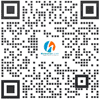 0
0








 0
0








Industrial Ultrasonic Flow Meter System Theory
Ultrasonic flow meters are volumetric flow meters that are used to measure the flow rate of liquids, gases, or steam. They are commonly found in oil and gas, pharmaceutical, and food and beverage industries. Flow meters use time of flight or doppler techniques to measure flow rate.
Flow meters that use the time of flight principle have a pair, or multiple pairs, of transducers. The transmit time of the ultrasonic waves is measured in both directions and from this the flow rate can be calculated. This technique typically requires a relatively pure medium, with <5% particles. Accuracies of <1% are achievable.
Using the doppler approach, ultrasonic pressure waves are reflected off of moving particles in the flow. The velocity of these particles creates a doppler shift in the echo signal, which is used to determine the flow rate. This measurement approach is typically limited to 3% accuracy in real-world implementations.
An ultrasonic flow meter consists of power supplies, transducer excitation, signal conditioning, ADCs, processing, a display, a keypad, and multiple communication options, such as 4 mA to 20 mA, HART, RS-485, and wireless.
This solutions guide will focus on ultrasonic flow meters based on the time of flight principle. The signal chain below is best suited for applications requiring higher performance, especially those with multiple pairs of transducers. As well as the need to achieve high measurement accuracy, these designs often have significant space constraints.
In liquid ultrasonic flow meters, a 1 MHz ultrasonic frequency is common. The accuracy of the system is directly related to the relative accuracy of the upstream and downstream time of flight measurements. For this reason, an FPGA is generally used to control the timing of the transmit and receive pulses. Careful attention must also be paid to any possible variations in latency of the transmit and recieve signal paths.
Another important aspect is the high gain required by the receive signal chain. This gain needs to be dynamically adjustable for different flow conditions and pipe sizes, typically in the range of 60 dB or higher, thus requiring a low noise receive signal chain path.
The transducer excitation can be either be on/off or a waveform generator may be used. A waveform generator typically adds cost and complexity, but provides greater control of the output signal allowing for an even more accurate and robust flow meter design.
The signal processing requires considerable filtering and FFT analysis to determine a precise time-stamp for the receive signal, which can be done using a DSP processor that can also support the required interface protocols.
